What to Pack for Japan: Seasonal Packing Lists
Table of Contents
- Essential Items for Any Japan Trip
- Spring Packing List (March to May)
- Summer Packing List (June to August)
- Fall Packing List (September to November)
- Winter Packing List (December to February)
- Packing Tips for Different Types of Travelers
- Final Packing Tips for Japan
- Looking for a tour agency to help with your planning?
Japan is a country where each season has its own magic—and packing right can make or break your trip. Whether you’re admiring cherry blossoms in Kyoto, braving Tokyo’s humid summer, taking in Nikko’s autumn colors, or skiing on Hokkaido’s famous powder, knowing what to bring is key to a smooth experience.
Packing well means understanding Japan’s unique seasonal quirks. Summers can be steamy in Tokyo, while Hokkaido offers cooler air and snow-filled winters. This guide gives you the essentials for any trip, along with specific packing lists for each season, so you’re prepared no matter when you’re visiting. Let’s get you packed and ready for all that Japan has to offer!
Essential Items for Any Japan Trip
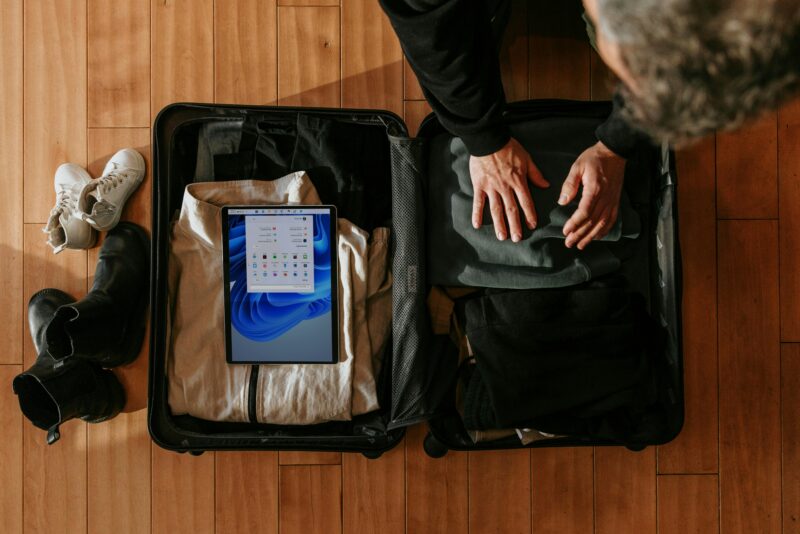
No matter the season, there are certain items that every traveler should bring to Japan. These essentials will keep you prepared for most situations, allowing you to fully immerse yourself in the experience.
Travel Documents and Essentials
- Passport and Visa Requirements: Ensure your passport has at least six months of validity from your date of entry. While most travelers can enter Japan visa-free for short-term visits, it’s essential to verify entry requirements based on your nationality (Ministry of Foreign Affairs of Japan). Bring a printed or digital copy of your hotel reservations, which can speed up check-ins.
- Japan Rail Pass: If you plan to explore multiple cities, the Japan Rail Pass offers significant savings on bullet trains and other JR-operated transportation. Buying the pass before arriving in Japan will generally save you money and add convenience (Japan Rail Pass Official).
- Credit and Debit Cards: While Japan has become more card-friendly, cash is still commonly used, especially in smaller shops and rural areas. Bring an international credit card (Visa or MasterCard are most widely accepted) and inform your bank of your travel plans. ATMs at 7-Eleven stores allow for easy cash withdrawal using foreign cards (Japan Guide on Currency).
Electronics
- Universal Adapter: Japan uses Type A and Type B outlets, with a voltage of 100V, which differs from many countries. A universal adapter will ensure your devices stay charged, especially for items like cameras and laptops.
- Portable Charger: As you’ll likely rely on your phone for navigation, translation, and communication, a portable charger or power bank is essential for full-day outings.
- SIM Card or Pocket Wi-Fi: Staying connected is essential, especially for navigation and communication. A SIM card or pocket Wi-Fi device provides reliable internet access throughout your trip, with both available for pick-up at major Japanese airports (Japan Wireless).
Health and Safety Essentials
- Prescription Medications: Bring any essential medications with you, as finding specific brands can be challenging. Some medications that are common in other countries, like stimulants or certain painkillers, are restricted in Japan, so it’s important to review import rules on the Japanese Ministry of Health’s website.
- Basic First Aid Kit: Having items like band-aids, pain relievers, and motion sickness tablets is helpful. Japanese convenience stores stock many over-the-counter products, but they may differ from what you’re used to.
- Hand Sanitizer and Masks: Masks are commonly worn in Japan, especially in crowded spaces or during flu season. Hand sanitizer is convenient for public spaces, particularly when traveling by train.
Comfort and Convenience
- Reusable Water Bottle: Japan has safe drinking water, and a reusable water bottle helps reduce waste and keeps you hydrated, especially in summer.
- Daypack: A small, comfortable daypack will carry essentials like your camera, wallet, and souvenirs as you explore.
- Lightweight Umbrella: Sudden showers are common, so a compact umbrella can be a lifesaver.
These essentials will keep you prepared and comfortable throughout your journey, no matter the season. Now, let’s break down what to pack for each season in Japan.
Spring Packing List (March to May)

Spring is one of the most popular times to visit Japan, especially in late March and early April, when cherry blossoms bloom across the country. The weather is generally mild, with temperatures ranging from 10°C to 20°C (50°F to 68°F), though occasional rain and chilly evenings are common.
Clothing Suggestions for Spring
Layering is key in spring. Start with a T-shirt or light long-sleeve shirt as a base layer, add a sweater or cardigan for warmth, and top it with a medium-weight jacket. You’ll often be removing layers during the day as temperatures rise. For cooler mornings and evenings, a medium-weight coat can add extra comfort.
Bring comfortable walking shoes for visiting parks and cherry blossom spots. Many cherry blossom viewing areas, such as Ueno Park in Tokyo and Maruyama Park in Kyoto, involve a lot of walking, so a good pair of shoes will make a difference.
Extras for Spring
- Compact Umbrella or Raincoat: Spring showers are common, especially in April. A lightweight, compact umbrella or raincoat is essential.
- Allergy Medication: Cherry blossoms are beautiful, but they can bring on allergies for some. If you’re prone to hay fever, bring allergy medication or a mask to help reduce symptoms.
Summer Packing List (June to August)
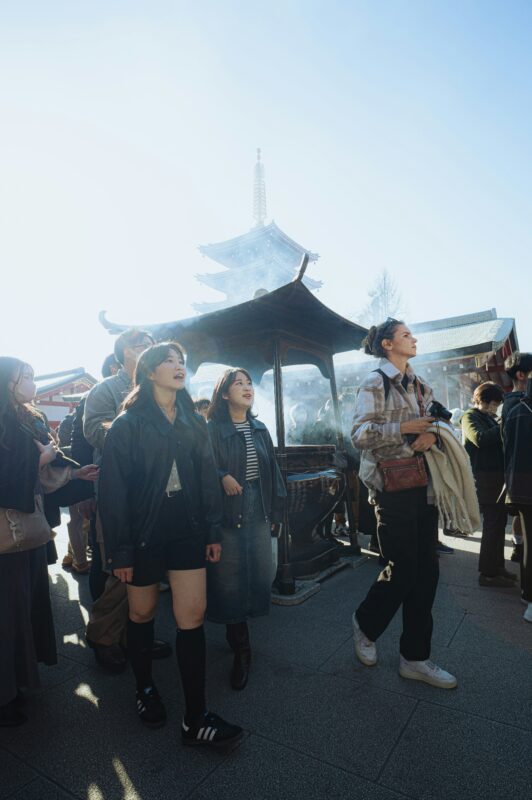
Summer in Japan is known for its intense heat and high humidity, particularly in urban areas like Tokyo and Osaka. June marks the start of the rainy season, followed by hot and humid weather from July to August. In many places, temperatures can exceed 30°C (86°F), so packing to stay cool and comfortable is essential.
Clothing Suggestions for Summer
Choose lightweight, breathable fabrics like cotton or linen to stay cool. T-shirts, shorts, and dresses are ideal, and moisture-wicking materials can help keep you comfortable on humid days. Pack a pair of comfortable, breathable walking shoes or sandals for casual sightseeing.
If you plan to visit the beach or go to an onsen (hot spring) with outdoor baths, a swimsuit will come in handy. Okinawa’s beaches are particularly popular during this season.
Extras for Summer
Lightweight Rain Jacket or Poncho: June and early July bring frequent rain showers, so a light, packable rain jacket or poncho is useful.
Portable Fan or Cooling Towel: The heat can be intense, and a portable fan or cooling towel provides relief, especially during sightseeing.
Sun Protection: Bring sunscreen, a sunhat, and sunglasses. Japan’s summer sun is strong, and staying protected from UV rays is crucial.
Fall Packing List (September to November)
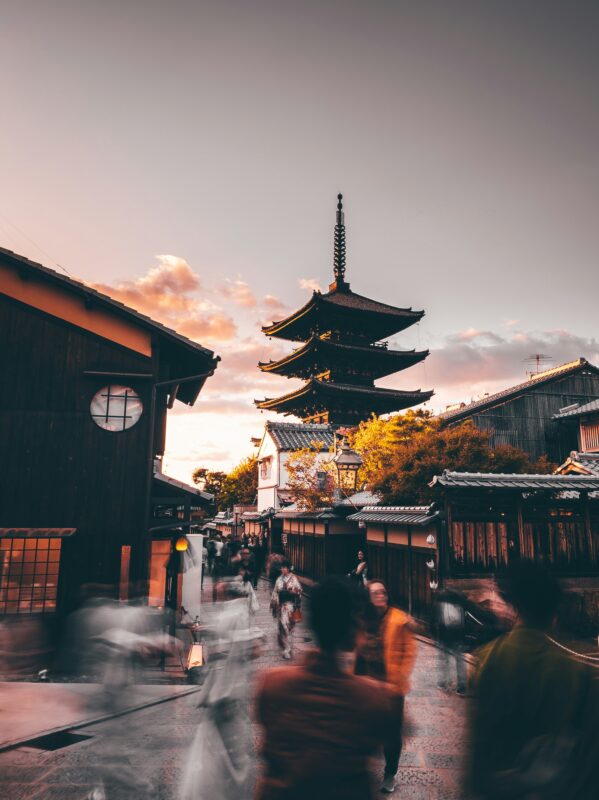
Fall in Japan offers mild, comfortable weather with beautiful autumn foliage that begins in the north and gradually moves south. Temperatures in fall are similar to spring, generally ranging from 15°C to 25°C (59°F to 77°F), but the early part of the season is also typhoon season, so be prepared for some rain in September.
Clothing Suggestions for Fall
Layered clothing works well for fall. Bring long-sleeve shirts, light sweaters, and a medium-weight jacket. In November, temperatures can dip further, so a thicker coat may be needed, especially in mountainous regions.
Comfortable, sturdy shoes are essential, as fall is a fantastic time for outdoor activities like hiking in Nikko or exploring parks in Kyoto. Japan’s autumn colors are a sight to behold, and the cool, dry weather makes it an ideal season for nature lovers.
Extras for Fall
- Compact Umbrella: A small, foldable umbrella is useful for early fall when typhoons can bring sudden rain.
- Scarf and Gloves: If you’re visiting mountainous areas or traveling in late November, a scarf and gloves can add warmth for early mornings and evenings
Fall in Japan is stunning, with vibrant red, orange, and yellow foliage transforming landscapes. For more on where to see the best autumn colors, check our Fall Foliage Guide for Japan.
Winter Packing List (December to February)
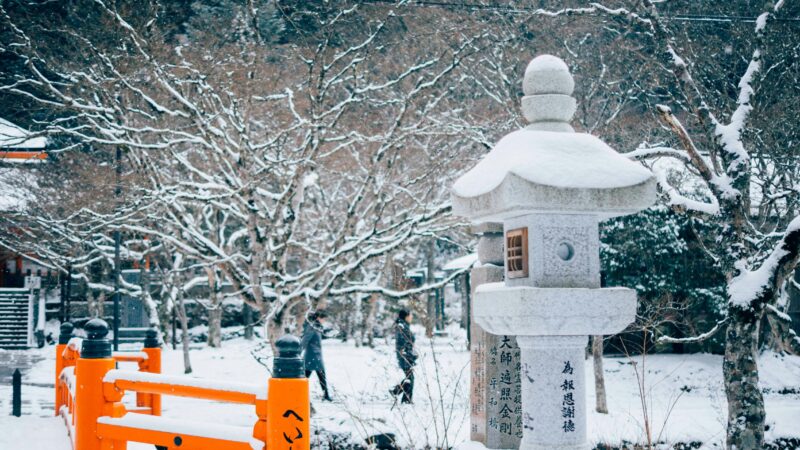
Winter in Japan varies significantly by region, with temperatures ranging from mild in the south to snowy and cold in the north. Cities like Tokyo and Kyoto experience temperatures around 5°C to 10°C (41°F to 50°F), while northern regions, including Hokkaido, can dip below freezing. Winter is an enchanting time in Japan, particularly for those interested in skiing, winter festivals, and snow-covered landscapes.
Clothing Suggestions for Winter
If you’re traveling to Japan in winter, packing for warmth is key. Start with thermal base layers, which provide insulation without adding bulk. On top, add sweaters or fleece layers and finish with a heavy, waterproof winter coat. Many areas in Japan receive heavy snowfall, so make sure your coat is suitable for cold, wet weather.
For your lower body, thermal leggings worn under jeans or insulated pants will help keep you comfortable, especially in northern or mountainous areas. Waterproof boots with insulation are also essential if you’ll be walking in snow or rain. Cities in Japan are well-heated, so it’s easy to remove outer layers when indoors.
Extras for Winter
Ski Gear (Optional): If you’re heading to Japan’s ski resorts in Hokkaido or Nagano, consider renting ski gear locally. Most resorts offer high-quality rentals, saving you from bringing bulky equipment.
Thermal Accessories: Warm accessories like gloves, a hat, and a scarf are must-haves. For added warmth, you can find disposable heat packs, or “kairo,” at convenience stores across Japan. These small packets can be tucked into pockets or gloves and provide hours of heat—perfect for cold days outside.
Moisturizer and Lip Balm: The cold, dry air in winter can be harsh on your skin. Moisturizer and lip balm help combat dryness, especially if you’re spending a lot of time outdoors.
Packing Tips for Different Types of Travelers
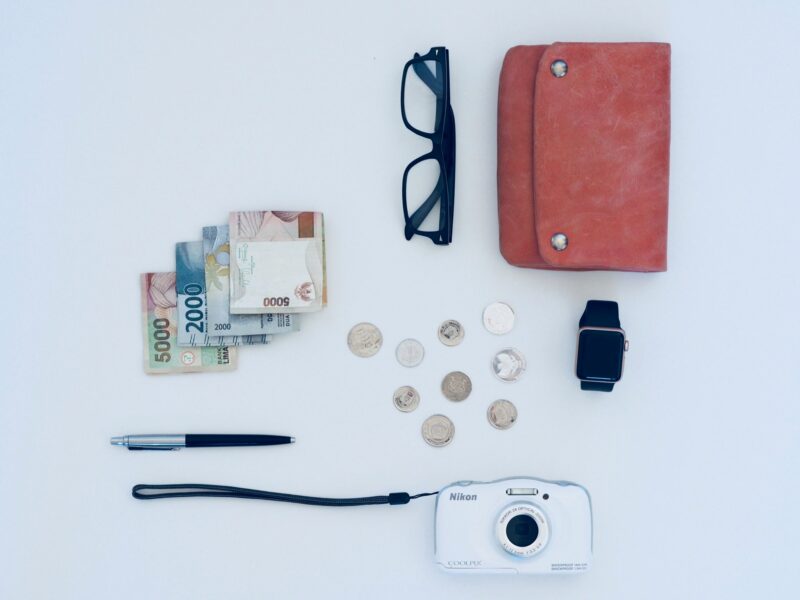
Japan offers diverse experiences to suit every traveler, whether you’re with family, seeking adventure, exploring cultural sites, or working remotely. Here’s a breakdown of additional items to consider based on your travel style.
For Families with Kids
Japan is incredibly family-friendly, with plenty of activities, parks, and interactive museums that kids love. Here are some extra packing tips for families:
- Entertainment for Kids: Long train rides are common in Japan, so bring small toys, coloring books, or tablets with downloaded games and shows. Keeping kids entertained during travel makes the journey smoother for everyone.
- Stroller or Baby Carrier: A lightweight, foldable stroller is useful in Japan’s cities, especially in places like Tokyo where you’ll be walking a lot. However, be prepared to fold it when using public transportation, as trains and buses can get crowded.
- Snacks: While convenience stores in Japan have a wide variety of kid-friendly snacks, having a few familiar options on hand can be helpful for younger travelers who may be picky eaters.
- Baby Essentials: Diapers, baby formula, and wipes are widely available in Japanese drugstores and convenience stores, but it’s still a good idea to bring enough for the first few days until you get your bearings.
For Outdoor Adventurers
Japan’s landscapes are a haven for outdoor enthusiasts, offering hiking trails, mountains, and opportunities for skiing, diving, and more. If you’re planning on an active trip, here’s what to bring:
- Hiking Gear: Comfortable, sturdy hiking shoes or boots are essential if you plan to hike in regions like the Japanese Alps or Mt. Fuji (in summer). Bring layers, as temperatures can vary significantly at higher altitudes.
- Weatherproof Outerwear: If you’re visiting Japan’s mountainous or coastal regions, weather-resistant clothing, such as a waterproof jacket and quick-dry pants, will protect you from the elements.
- Insect Repellent: Particularly useful for summer hikes, especially in forested areas where mosquitoes are common.
- Waterproof Daypack: A small, durable backpack for carrying essentials like water, snacks, and extra layers while you’re on the trails.
Japan’s natural beauty is stunning year-round, and having the right gear ensures you can fully enjoy its trails, rivers, and mountains. For a guide to Japan’s outdoor activities, check out Japan National Tourism Organization’s Outdoor Guide.
For Food and Shopping Enthusiasts
Japan is a paradise for food lovers and shoppers alike. From traditional street markets to high-end shopping districts, there’s always something new to taste and buy. Here’s what to pack for a food and shopping adventure:
- Reusable Tote Bags: Many stores charge for plastic bags, so a reusable tote is convenient for carrying purchases and reducing waste. Plus, it’s perfect for spontaneous shopping stops.
- Portable Chopsticks and Reusable Utensils: Eco-conscious travelers can pack their own chopsticks and utensils to reduce single-use plastics, especially if you’re trying food from street vendors.
- Cooler Bag: If you’re planning to bring home perishable items like Japanese sweets, consider packing a small cooler bag to keep them fresh during transit.
For Digital Nomads and Long-Term Visitors
Japan is an increasingly popular destination for remote workers and long-term travelers. With excellent internet infrastructure and abundant coworking spaces, it’s a convenient base for digital nomads. Here’s what to pack if you’re working remotely in Japan:
- Portable Laptop Stand and Keyboard: For better ergonomics during long working hours, a lightweight laptop stand and portable keyboard can make your workspace more comfortable.
- Power Strip with USB Ports: Japanese hotel rooms and cafes may have limited outlets. A compact power strip with USB ports ensures you can charge multiple devices at once.
- VPN Subscription: If you need access to specific websites or security for remote work, a VPN is useful. Japan has generally open internet access, but a VPN provides an extra layer of protection.
- Extended Toiletries: While most toiletries are available in Japan, long-term travelers may prefer to bring familiar brands or specific items that are harder to find locally.
Final Packing Tips for Japan
Now that you have a season-specific packing list and tips tailored to different travel styles, here are a few last reminders to make your trip as smooth and enjoyable as possible:
- Pack Light and Use Luggage Delivery: Japan’s public transportation is efficient but often crowded, making large luggage cumbersome. Consider using Japan’s “takkyubin” luggage delivery service, which allows you to send bags between hotels or to the airport for a reasonable fee. This can be especially helpful if you’re planning to travel by train or visit multiple cities.
- Consider Packing Cubes: Packing cubes help you organize your suitcase, making it easier to find things and stay organized, especially on longer trips with multiple stops.
- Leave Room for Souvenirs: Japan is known for unique shopping finds, from ceramics and traditional crafts to the latest electronics and fashion. Packing a collapsible bag gives you extra space to bring home special items without overcrowding your luggage.
- Stay Mindful of Local Etiquette: Dressing modestly is appreciated in places of worship like temples and shrines, where covering shoulders and wearing longer skirts or pants is respectful. Having a scarf or shawl on hand is an easy way to adapt your outfit if needed.
- Embrace Japan’s Convenience Stores: If you forget something, Japan’s convenience stores (known as konbini) are well-stocked with essentials like toiletries, snacks, and basic medication. These stores are everywhere and offer an impressive range of items, often available 24/7.
By packing smartly and preparing for Japan’s seasonal nuances, you’ll be well-equipped to enjoy everything this incredible country has to offer.
Looking for a tour agency to help with your planning?
Contact Firefly Japan to book a private luxury tour in Tokyo & Kanto


